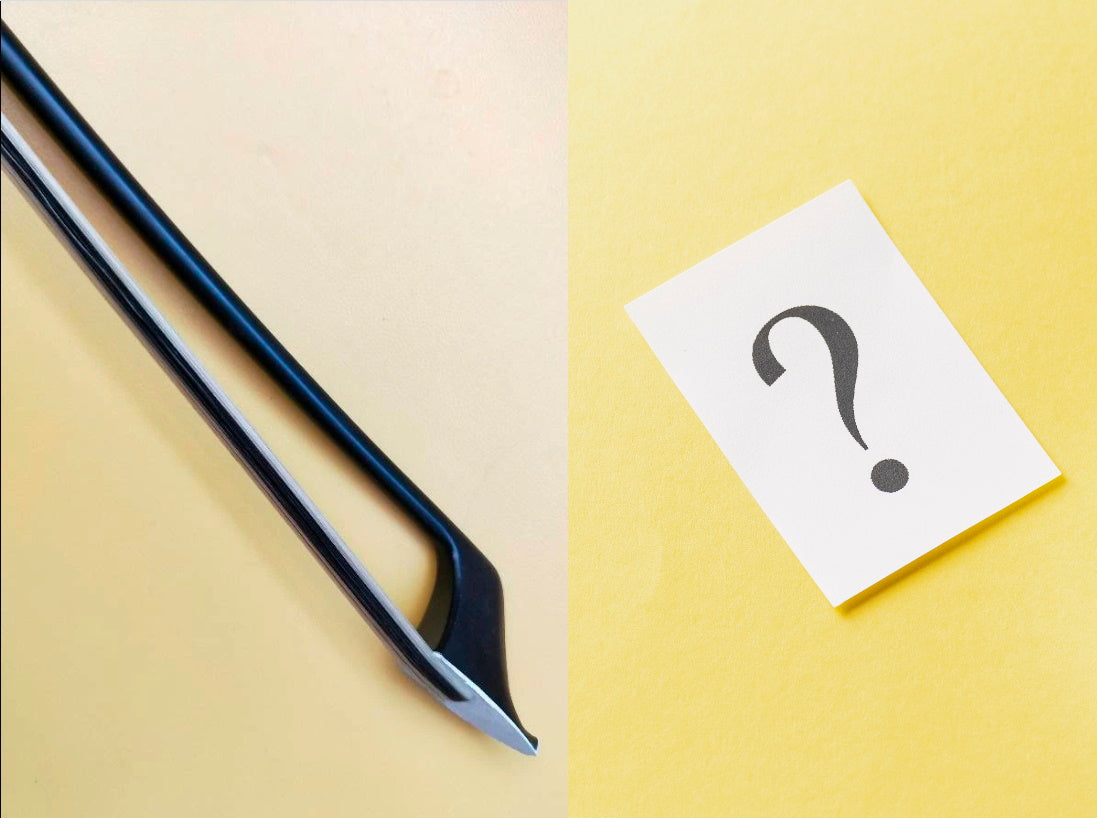
Wood bows are conventional, but conventional does not really mean best in all cases. You do have to think about what can happen to wood when it is in continuous work. It is a natural material that is vulnerable to environmental situations. To get the sound from a wood bow that you hope for they cannot be overly thick but a thin bow can easily break. The more you play with a wood bow the more risk you are taking that the bow will snap!
Now, what is the perfect quick fix?
The carbon fiber bow is really an easy solution to this age old problem.
Many people choose the traditional wood bow just because they want to stick to custom. Considered an amazing wood source for making bows, the Pernambuco tree, is becoming endangered.

An alternative source must be in place to make sure these fine bows never go out of production. One perfect option is carbon fiber. Only in the last decades the possibilities of carbon fiber were discovered. If the instrument can be improved using other materials, why not try them out? We always want to try the perfect option, right?
Buying a bow is something very personal and just as important as buying a good instrument. Now, what is exactly a carbon fiber bow?
Carbon fiber bows are made with woven carbon fiber stick. With this, they have all the flexibility of wood without any weak areas and are typically lighter in weight. They are resistant to weather issues because they are made from synthetic material, making them suitable for a humid environment. Carbon fiber is incredibly stable. That means lesser probability of breakage.
These bows take playing in outdoor gigs to a whole a new level! Outdoor performers might as well consider this as a second bow.
There are some clear advantages when you use a carbon fiber bow. These are the following:
- Sound - a number of traditionalists think that they won’t achieve the same satisfaction they obtain from a wooden bow. After many years of research in improving carbon fiber bows, they are just about equal with wooden bows as to performance. That if you take a blindfold test, you can’t tell which you are using.
- Sturdy yet lightweight – it won’t expand, contract, warp or break as easily as wooden bows. They are much stronger and less influenced by temperature and humidity. It can stand up rigorous handling especially during travel.
- Great value for money – Since Pernambuco is not allowed to be chopped down anymore; wooden bows become lower and lower in quality and higher in price. With carbon fiber bows, cost is largely stable because it doesn’t depend on rare wood availability.
- Sustainable – currently Pernambuco is an endangered tree. We can help in preserving the endangered source trees of the traditional wood bows.
There’s nothing wrong with adhering to tradition. However, double bass musicians also need to be socially responsible.
So, is it a wise choice to use carbon fiber bows? Is this the material that will work best for you as a performer? Trying several bows with your instrument might not be a bad suggestion. Close your eyes and play. How does the bow respond to you? Whatever you choose, make sure it is the bow to end all bows.
They say every bow is as unique as the musician (as wands are to Wizards). But if they provide the same satisfaction and give a tree a better chance of survival, then I rest my case.
Where can I get a carbon fiber bow?
Good news! If you are a double bassist, you can get a carbon fiber bass bow right here on this website!
Click here to buy the Fiesta carbon fiber bow. Available in both French and German bow grip.


74 commentaires
EBbqKVGQT
I’m yours – http://clickfrm.com/zyp7
Take are my heart – http://clickfrm.com/zchp
Take my heart – http://clickfrm.com/zagM